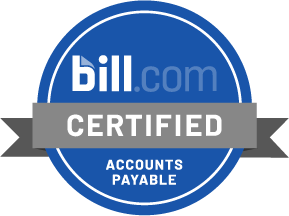Prepare for Taxes
Ensure you have everything you need to accurately prepare your return.
1/7/20252 min leer


Preparing for taxes can feel overwhelming, but breaking it down into manageable steps can make the process easier. Here are some key steps to help you get started:
### 1. Gather Necessary Documents
Collect all relevant documents, including:
- **W-2 forms**: Provided by your employer; shows your earnings and taxes withheld.
- **1099 forms**: For freelance or contract work, interest income, dividends, etc.
- **1098 forms**: For mortgage interest or tuition payments.
- **Receipts**: For deductible expenses such as charitable donations, medical expenses, and business-related expenses.
- **Bank statements**: For interest earned or any relevant transactions.
- **Investment statements**: Reports on stock sales or capital gains, usually provided by your brokerage.
### 2. Identify Your Filing Status
Determine your filing status, which can affect your tax rates and eligibility for certain deductions. The main categories are:
- Single
- Married Filing Jointly
- Married Filing Separately
- Head of Household
- Qualifying Widow(er)
### 3. Choose a Method of Filing
Decide how you want to file your taxes:
- **DIY software**: Programs like TurboTax, H&R Block, or TaxAct can guide you through the process.
- **Tax professional**: Hiring a CPA or tax preparer can be beneficial, especially for complex situations.
- **Paper filing**: If you prefer to fill out IRS forms manually, download the necessary forms from the IRS website.
### 4. Understand Deductions and Credits
Familiarize yourself with deductions and credits that may apply to you:
- **Standard deduction**: A fixed dollar amount you can deduct from your taxable income.
- **Itemized deductions**: Specific expenses you can deduct item by item, like mortgage interest, state taxes, and certain medical expenses.
- **Tax credits**: Direct reductions in your tax liability, such as the Earned Income Tax Credit or Child Tax Credit.
### 5. Calculate Your Income and Taxes
- **Total your income** from all sources (W-2s, 1099s, etc.).
- **Subtract deductions** to determine your taxable income.
- **Calculate your tax liability** based on the applicable tax rates.
### 6. Review State Taxes
If your state has income tax, ensure you have all the necessary documents and details to file your state return as well.
### 7. Confirm Payment or Refund Options
- Determine if you owe taxes or if you will receive a refund.
- If you owe taxes, explore payment options or installment agreements if necessary.
- If due for a refund, choose how you'd like to receive it (direct deposit, check, etc.).
### 8. Keep Records
After filing, keep copies of your tax return and all supporting documents for at least three years in case of an audit.
### 9. Stay Informed
Be aware of any changes in tax laws that may affect future filing, including changes in deductions, credits, or rates.
### 10. Don't Forget About Extensions
If you’re unable to file by the deadline, consider filing for an extension, but remember that this only extends your filing time, not your payment time.
By staying organized and proactive, you can make the tax preparation process smoother. Good luck! 🤞




